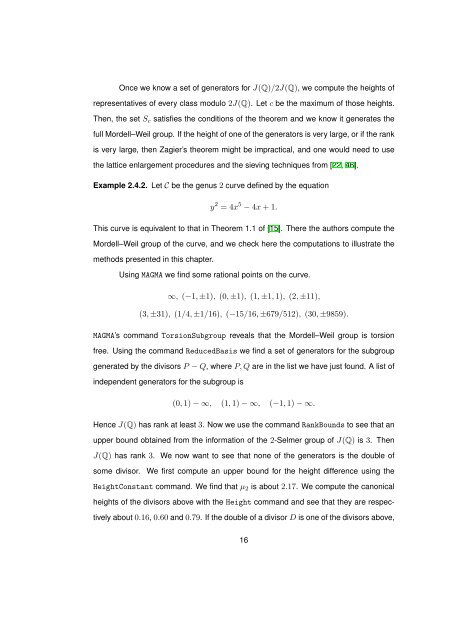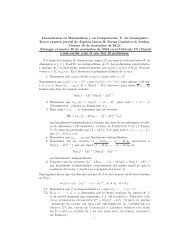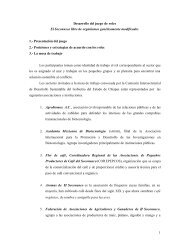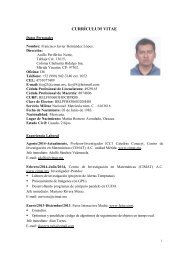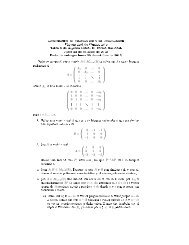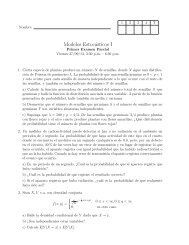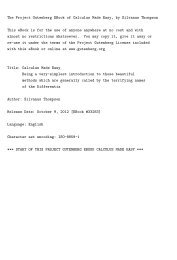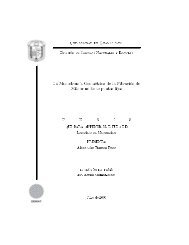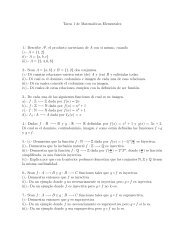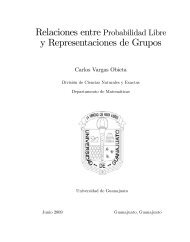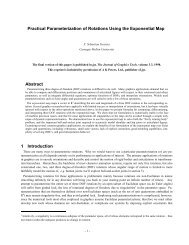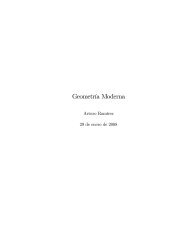S-integral points on hyperelliptic curves Homero Renato Gallegos ...
S-integral points on hyperelliptic curves Homero Renato Gallegos ...
S-integral points on hyperelliptic curves Homero Renato Gallegos ...
- No tags were found...
Create successful ePaper yourself
Turn your PDF publications into a flip-book with our unique Google optimized e-Paper software.
Once we know a set of generators for J(Q)/2J(Q), we compute the heights ofrepresentatives of every class modulo 2J(Q). Let c be the maximum of those heights.Then, the set S c satisfies the c<strong>on</strong>diti<strong>on</strong>s of the theorem and we know it generates thefull Mordell–Weil group. If the height of <strong>on</strong>e of the generators is very large, or if the rankis very large, then Zagier’s theorem might be impractical, and <strong>on</strong>e would need to usethe lattice enlargement procedures and the sieving techniques from [22, 46].Example 2.4.2. Let C be the genus 2 curve defined by the equati<strong>on</strong>y 2 = 4x 5 − 4x + 1.This curve is equivalent to that in Theorem 1.1 of [15]. There the authors compute theMordell–Weil group of the curve, and we check here the computati<strong>on</strong>s to illustrate themethods presented in this chapter.Using MAGMA we find some rati<strong>on</strong>al <str<strong>on</strong>g>points</str<strong>on</strong>g> <strong>on</strong> the curve.∞, (−1, ±1), (0, ±1), (1, ±1, 1), (2, ±11),(3, ±31), (1/4, ±1/16), (−15/16, ±679/512), (30, ±9859).MAGMA’s command Torsi<strong>on</strong>Subgroup reveals that the Mordell–Weil group is torsi<strong>on</strong>free. Using the command ReducedBasis we find a set of generators for the subgroupgenerated by the divisors P − Q, where P, Q are in the list we have just found. A list ofindependent generators for the subgroup is(0, 1) − ∞, (1, 1) − ∞, (−1, 1) − ∞.Hence J(Q) has rank at least 3. Now we use the command RankBounds to see that anupper bound obtained from the informati<strong>on</strong> of the 2-Selmer group of J(Q) is 3. ThenJ(Q) has rank 3. We now want to see that n<strong>on</strong>e of the generators is the double ofsome divisor.We first compute an upper bound for the height difference using theHeightC<strong>on</strong>stant command. We find that µ 2 is about 2.17. We compute the can<strong>on</strong>icalheights of the divisors above with the Height command and see that they are respectivelyabout 0.16, 0.60 and 0.79. If the double of a divisor D is <strong>on</strong>e of the divisors above,16


